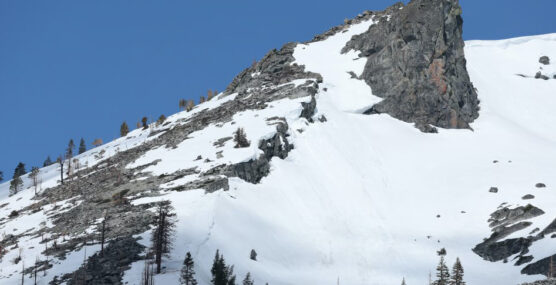The drive to the University of California, Berkeley Central Sierra Snow Lab in California’s Sierra Nevada Mountains shouldn’t have been easy this week.
Snow in late December at the Soda Springs facility, at 6,800 feet, should have made it too difficult. But Andrew Schwartz, lead scientist and manager of the laboratory, had little trouble getting to work.
The snow level is shallow, with some bare earth still visible in spots. It snowed about 3/4 of an inch Wednesday night.
“And that’s about it,” Schwartz said. “It’s not time to panic by any means. But we do really need it to start picking up.”
The snow lab has seen just under 30 inches of snow so far this water year — about 33% of average for this time of year. With rain and snow combined, the lab has received 71% of average to date. Statewide, California is at 63% of its average.
Schwartz knew that El Niño conditions would bring warner weather and more rain, though snow is what he’s looking for. He anticipates water managers will grow concerned if more snow doesn’t come over the next six weeks.
Snowpack serves as a kind of reservoir for the state. As it melts, water enters streams and rivers, and ultimately California reservoirs.
Mike Anderson, a climatologist with the California Department of Water Resources, said the situation looked good at the water year’s start on Oct. 1.
“It looked like, hey, we’re off to a great start,” he said.
That strong start soon tapered. Anderson said there’s a stubborn high-pressure system lingering off the coast that’s pushing storms north.
Rainfall is important, as it helps fill the state’s reservoirs. Last year, California faced low reservoirs levels — until significant storms clobbered the state.
“This year, we’re doing a whole lot better than last year,” Anderson said.
Four of the state’s 17 major reservoirs were under their historic average as of late Thursday. The two largest — Shasta and Oroville — were at 115% and 130% of historical average, respectively.
California went from record lows early this year to what Anderson called great levels. However, like Schwartz, he said this rain year is starting slow.
Anderson also looks at groundwater, which he said most communities rely on for their water needs. It’s water that’s held underground, seeping through the earth to replenish aquifers.
For Anderson, it’s important for groundwater to be recharged. That happens naturally, but also can occur through irrigation and normal rainfall helps with that as well.
Rain, and then snow, is forecast this weekend for the snow lab. The chance of snow again rolls in around Jan. 3. However, little accumulation is expected.
Historically, the snowpack reaches its peak on April 1. By that month’s end, 90% of precipitation for this water year will have fallen. An evaluation of the snowpack will happen late that month.
What’s bad news for water managers could be viewed as good news for the California Highway Patrol, especially considering the upcoming New Year’s holiday.
There are two major thoroughfares through the Sierra Nevada Mountains from California to Nevada — Interstate 80 and Highway 50. The summits on both are around 7,200 feet, and both can be treacherous during inclement weather.
Traveling east, Highway 50 passes through the town of South Lake Tahoe, at around 6,200 feet, on the California-Nevada border. Ruth Loehr, public information officer with the California Highway Patrol in that area, said conditions right now are great.
“Things look great right now, because we have very little snow on the ground in general,” she said.
Loehr has her share of horror stories — a big rig without chains sliding off a road last year featuring prominently. With only a couple of snow events so far this year things look good, though Loehr is watching reports of a weekend storm.
“We’re all on pins and needles,” she said. “This year, I’m afraid we’re going to get it all at one time.”
Like this:
Like Loading...
Related





 Tweet This
Tweet This Facebook
Facebook Digg This
Digg This Bookmark
Bookmark Stumble
Stumble RSS
RSS


























REAL NAMES ONLY: All posters must use their real individual or business name. This applies equally to Twitter account holders who use a nickname.
0 Comments
You can be the first one to leave a comment.